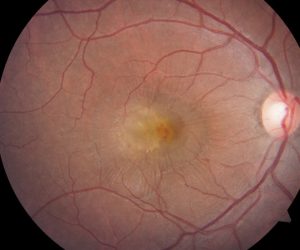OUR SPECIALTIES
Age related macular degeneration
 Age-related macular degeneration (AMD) is the leading cause of significant vision loss in individuals aged 50 and above. This disease primarily affects the central vision, with rare cases leading to complete blindness.
Age-related macular degeneration (AMD) is the leading cause of significant vision loss in individuals aged 50 and above. This disease primarily affects the central vision, with rare cases leading to complete blindness.
AMD impacts the macula, a crucial part of the retina responsible for sharp, detailed vision. In advanced stages, individuals may experience difficulties with driving, recognizing faces, and reading small print. Early-stage AMD might not exhibit noticeable signs or symptoms, making it challenging to detect.
There are two primary types of AMD, each with distinct causes:
Dry AMD: This form is the most prevalent, accounting for approximately 80% of AMD cases. The exact cause is unknown, but both genetic predisposition and environmental factors are believed to contribute. Dry AMD involves a gradual breakdown of light-sensitive cells in the macula, typically affecting one eye initially. Vision loss in this type tends to progress slowly and steadily. Age-related degradation of a critical support membrane beneath the retina is thought to be a contributing factor.
Wet AMD: While less common, this type often results in more severe vision impairment compared to dry AMD. It is the primary cause of significant vision loss. Wet AMD arises from the growth of abnormal blood vessels beneath the retina. These vessels can leak fluid and blood, giving rise to the term “wet” AMD. This condition can lead to a sizable blind spot at the center of the visual field.
Several factors increase the risk of developing age-related macular degeneration, including:
Being 50 years or older
Consuming a diet high in saturated fats
Smoking
High blood pressure or hypertension

